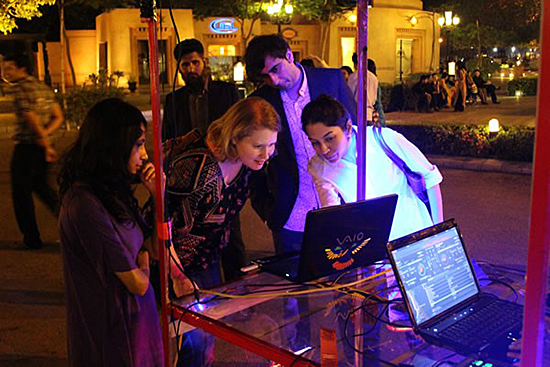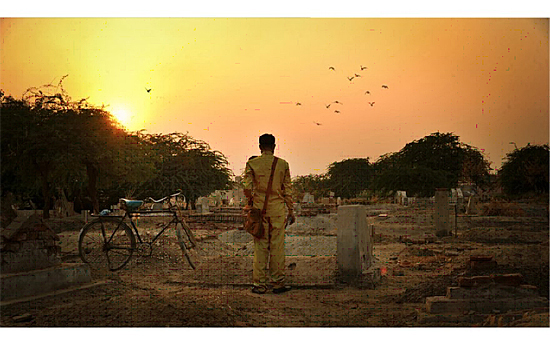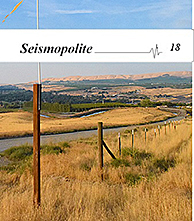Art Residencies – In pursuit of origin
Written by Sehr Jalil
Pakistan is a miracle of geography. Almost and only seven decades in the history of its being, surrounded by India, China, Iran and Afghanistan it is like an ozone layer of paradoxical narratives. Between war, peace, image and imagination it lives with complex realities. We were former India; we were a British colony for over centuries. An arts school where I teach History of Art was renamed National College of Arts when Pakistan came out of India in 1947(as a separate homeland for a majority of Muslims in the subcontinent), previously in British India it was the Mayo School of Arts, Lord Kipling was its first principal and it was designed by the brilliant Bhai Ram Singh, a Hindu architect. It was important to briefly establish this background as the art scene or art world in Pakistan is deep set in this dichotomy of time; social, political and ideological. This is where residencies come in like a bridge or a mirror. I want to intersect and rapture the post-colonial, ‘contemporary orient’ (I may say), image and art that transports from here through the art or the artist. Since the 1990’s and onwards contemporary art from Pakistan has become popular and in demand among prestigious museums, collections and institutions around the world yet there is some irony in this success; a preconceived idea of the art that goes from here, infects and challenges the possibility of actual art making. Probably, it is till date in line with the orient and the occident. The VASL Artist residency set in 2001 in Karachi with international affiliations and the Gasworks residency in London that has a specific trust for Pakistani Artists have both opened international audiences and encouraged a magnitude of cultural and creative exchange. On the other side they may have carved or crafted the art that is expected or applauded from this side of the world. I’m concerned about the purpose of these residencies. If a residency is a paragon of amalgamation and exchange can it ever be oblivious to the ‘origin’ of the artist? Using VASL and Gasworks as case studies, through art and the chosen artists, I want to investigate the eminence of origin in these artist residencies and their purpose regarding it: can a residency blur the boundaries of origin or does it further darken the lines, henceforth are residencies silently proclaiming that art and ‘visual’ is dependent on origin?
The oxford dictionary meaning of a specimen is: 1. individual or part taken as an example of a class or whole or 2. med sample of fluid or tissue for testing, representative, type, model, pattern. The Charles Wallace residency award is a creative flight for Pakistani emerging artists. It is organized by Gasworks, Green Cardamom (earlier) and VASL. All three organizations have contributed detrimentally to diminish borders in artistic collaborations, since a decade and more. From the orient to the occident, back and forth or somewhere lost in-between, these residencies are specimen of the artistic residential utopia and inevitably, the artists who enter them are consciously or ignorantly, experiments on their own – while they experiment with newer surroundings. “Vasl is part of the Triangle Arts Network and for the last 15 years its ongoing activities have included international workshops, local and international residencies, educational outreach programs, talks and other events. Taaza Tareen Residencies encourage and bring forth emerging talent from small town and villages, as well as large cities and feeds into the community of artists in Pakistan - This allows emerging artists to experiment with new environments and branch out of conventional artistic practices.” (Vaslart.org, 2017) Vasl, Pakistan, Goethe-Institute Pakistan and Lahore Biennale Foundation collaborated for "Urbanities – art and public space in Pakistan," the VASL website claims that “By way of artistic interventions and critical research possibilities, spheres and impediments of public space and its citizens' engagement with Lahore and Karachi will be explored and negotiated” (Vaslart.org, 2017) Two to four art institutions are canon to the artistic product line among Pakistani artists and artisans. The National College of Arts, Lahore, Pakistan which was The Mayo School of Arts in Lahore colonial India, has its fists gloriously clenched in a post-colonial terrain. While it also boasts of a Persian miniature department, the only one in the world that continues the traditional practice of miniature art. Recently after an urban heritage conference at the TU Berlin in March, a fellow conference member asked me rather innocently “You teach History of Art, do you include western Art history in Pakistan or is it just Islamic art?” Not answering or sharing my response from ‘then’ but mentioning this question is important here because eighteen hours in the clouds or weeks, months or days with people of different worlds with the magnitude of electronic connectivity, may not change our questions, let alone answers. The artist residencies are question marks but does their aftermath bring newer questions about the same specimen? Does ‘origin’ determine all questions of being or becoming, of life and art? And are residencies embarking that or deconstructing it? The VASL international artist residency BETWEEN THINKING, SEEING, SAYING AND NOTHING, 1 March - 6 April 2015 contributes to the question by saying “The synthesis of bringing together different avenues and diverse minds opens the field for a multiple sense of perceiving. It is in the individual human to choose what they want to see, touch, say and think, ultimately leading to the way in which they choose to create, where almost anything can mean nothing or everything” (Vaslart.org, 2017). Thus naive assumptions or expectations via origin may be natural or irrational altogether. In September 2012 VASL hosted Art Jones, a sound and media artist as part of the Bronx Museum's international smART power programme for U.S artists. His background and artistic process or statement reflects on the role of the selector of sound: “In Jamaica, beginning in the 1960's, the most important role at parties was that of the Selector, so named because he/she carefully selected the records to be played, with continuity of rhythm and the ebb and flow of the party at their control via the Soundsystem-fundamentally an amplifier, turntable, and (large) speakers. This role predates the contemporary concept of the DJ. In this social context the Selector/DJ becomes a facilitator of social engagement- a role that also expands upon first-world notions of the function of the 'party'- with the responsibility of bringing news, political debate, what is happening in the world outside of the physical space of the performance. This is what I want to bring to my collaboration with local artists and communities.” (Vaslart.org, 2017)

Is origin the selector or DJ of art making? Jones’s origin collides and creates vacuum with the chaos or stillness of Karachi. His practice through the residency is a sound excavation, performance and amalgamation with a joint group of young sculptors and painters… The oxford dictionary meaning for the word orient is; 1.The countries of the east, especially East Asia. 2. The special lustre of a pearl of the finest quality (with reference to fine pearls from the east). Orientalism according to Edward W. Said, in his revolutionary book, Orientalism is: “The basic distinction between east and west as the starting point for elaborate theories, epics, novels, social descriptions and political accounts concerning the orient, its people, customs, mind destiny and so on” (excerpts orientalism, 2017). A few months back during a discussion on the topic with my art history third year class a student inquired “why is there an issue with the west looking at us in a certain way, aren’t we looking at ourselves in the same way as well?” The question was an emergency alarm because it put at stake the understanding of the orient by the orient and raised a new question: is it really the orient? The following work is by Mahbub Jhokio, the chosen Gasworks artist for the 2017 residency. As stated on the website “he will continue his inquiry into the capacity of images to deceive and their ability to ‘lie truthfully’. This investigation will consider his status as a foreign artist, as well as an insider observer/reader of images in London” (Gasworks.org.uk, 2017)

On the 18th of April 2006, Indian Artist Anup Mathew Thomas (Vasl resident) entered the National College of Arts library after closing hours, where he placed 13 catalogues of his work titled ‘Well Basically This is about Thomas Jacob’. Each of the 13 catalogues was inscribed individually for artists who are currently teaching at the NCA” (Vaslart.org, 2017). Most of The catalogues have disappeared. No one can decipher how they left although there are 16 cameras installed in the library. “On the 4th of May 2006, the Artist found one of the catalogues in an artist’s studio, who had been informed during casual conversation earlier that a catalogue had been left for him in the NCA library. However, this artist had picked up a copy that was inscribed for another artist, since he could not find the one that was in his name”. (Vaslart.org, 2017). ‘Lying truthfully’, uncanny perspectives or hunger-games of ownership – tragically it is the brave new world where lies are pristine and celebrating false copyright is more exciting than excavating or understanding identity. For the open studios as a Gasworks resident Pakistani artist Huma Mulji presented her video flight. “In which a western woman instructs a virtual traveller from Karachi to London how to wrap a traditional veil depending on occasion, country and varying traditions. The video documents the increasingly creative ways of wearing the head-dress, moving from the traditional to the absurd” (Gasworks.org.uk, 2017) Mulji uncannily shifts the gaze; the act in itself is an intelligent trajectory of our preconceived understanding of truths, lies and possibilities.
xxx
The second part of this article will appear in Seismopolite issue 19.
Painter, thinker, writer, educationist, Sehr Jalil's recent MA/MPhil dissertation from the National College of Arts, Lahore, was titled ‘Understanding the phenomenon of paradise through contemporary visual art’. Jalil has exhibited her work nationally and internationally since 2006. Currently she is lecturer in the History of Art and Architecture, BFA and teacher in the Culture Studies MPhil program at the National College of Arts. Jalil also teaches A-level Art and design at The Lahore Grammar School. She has contributed continually to Art Now Pakistan.











